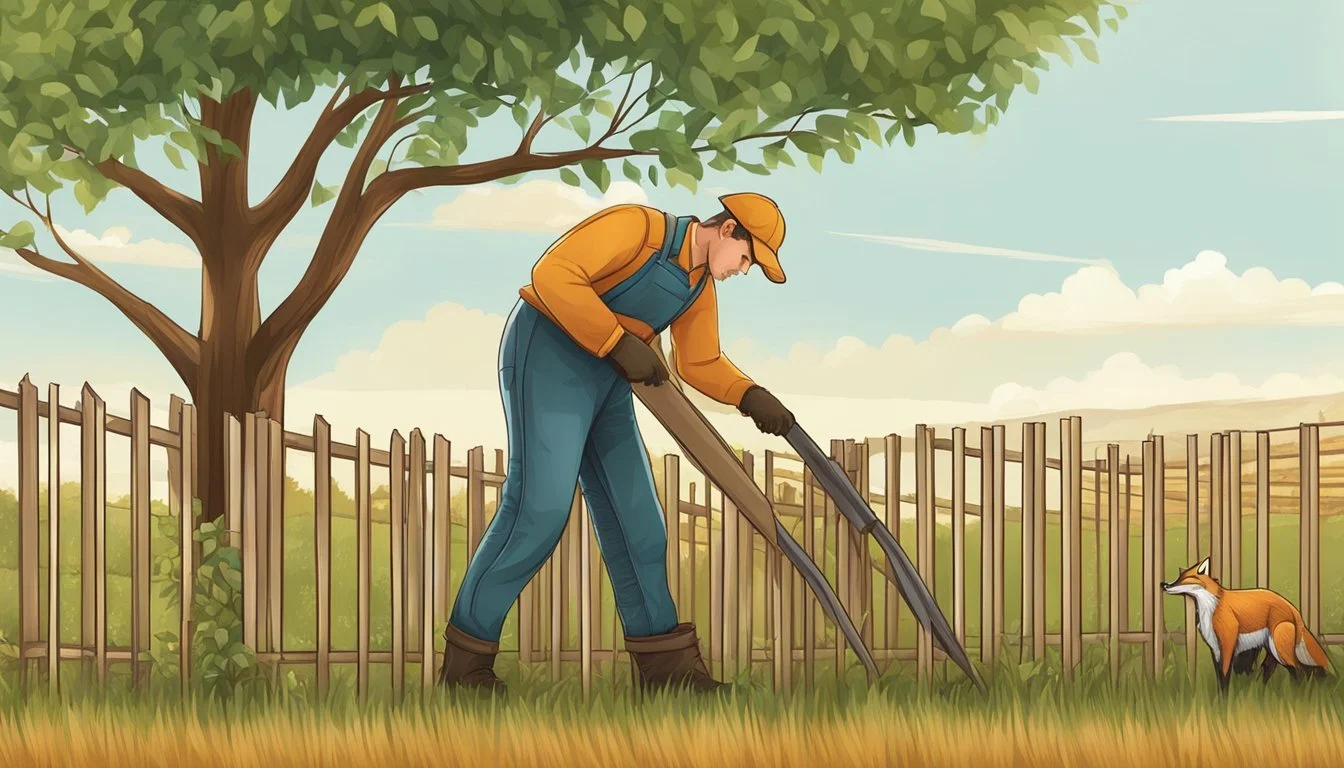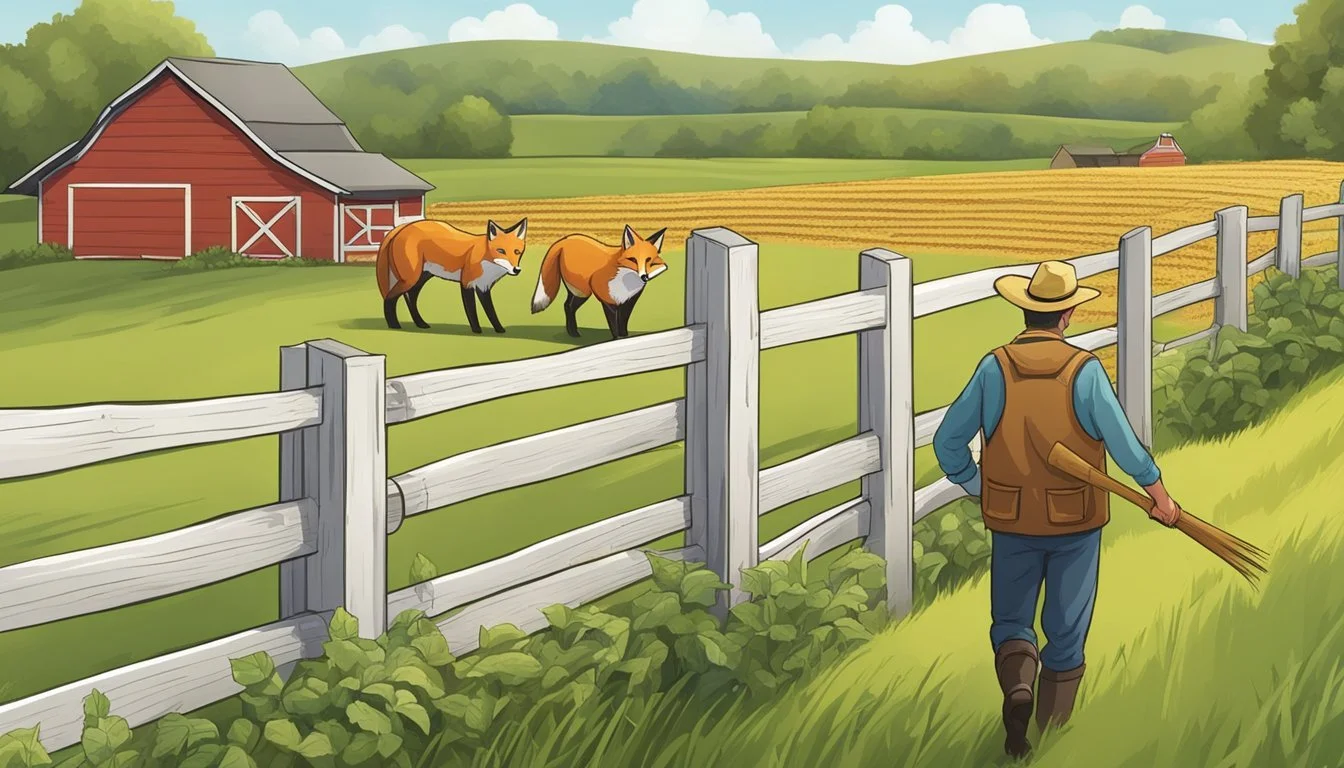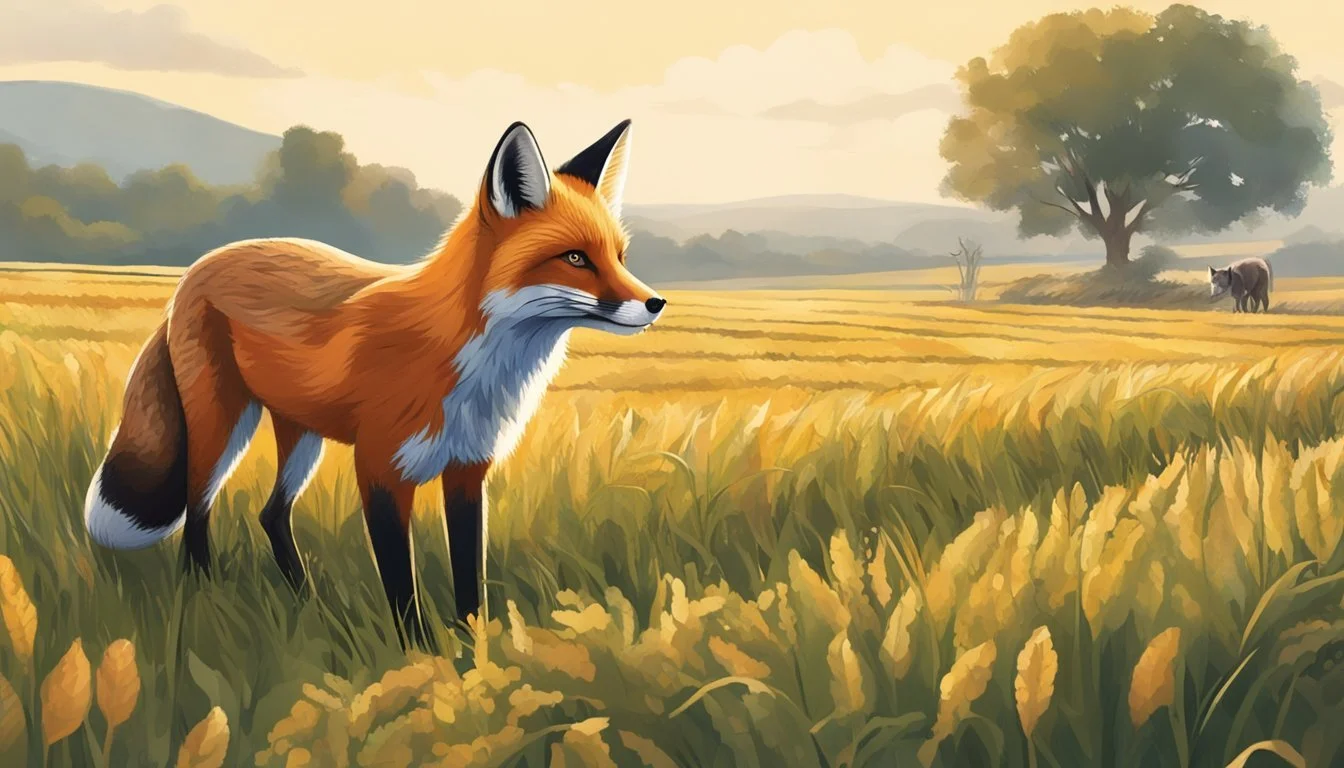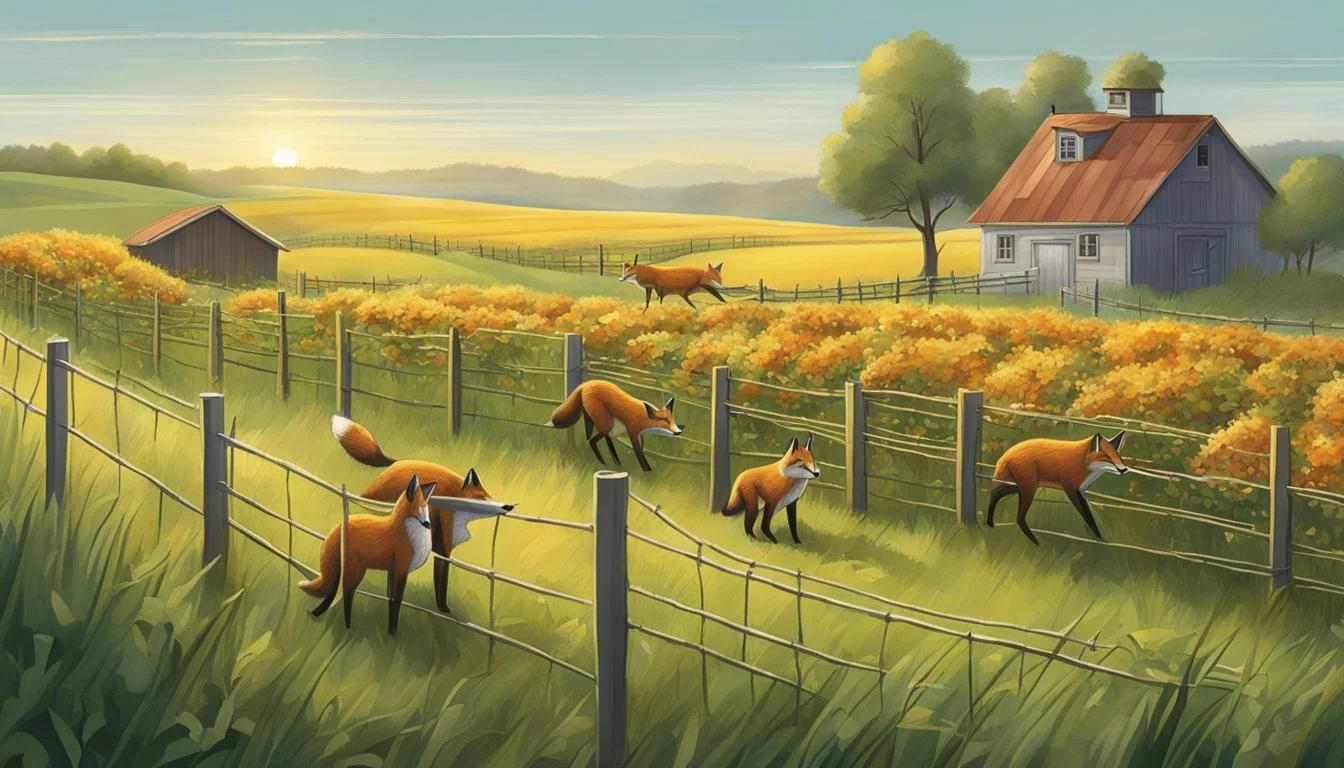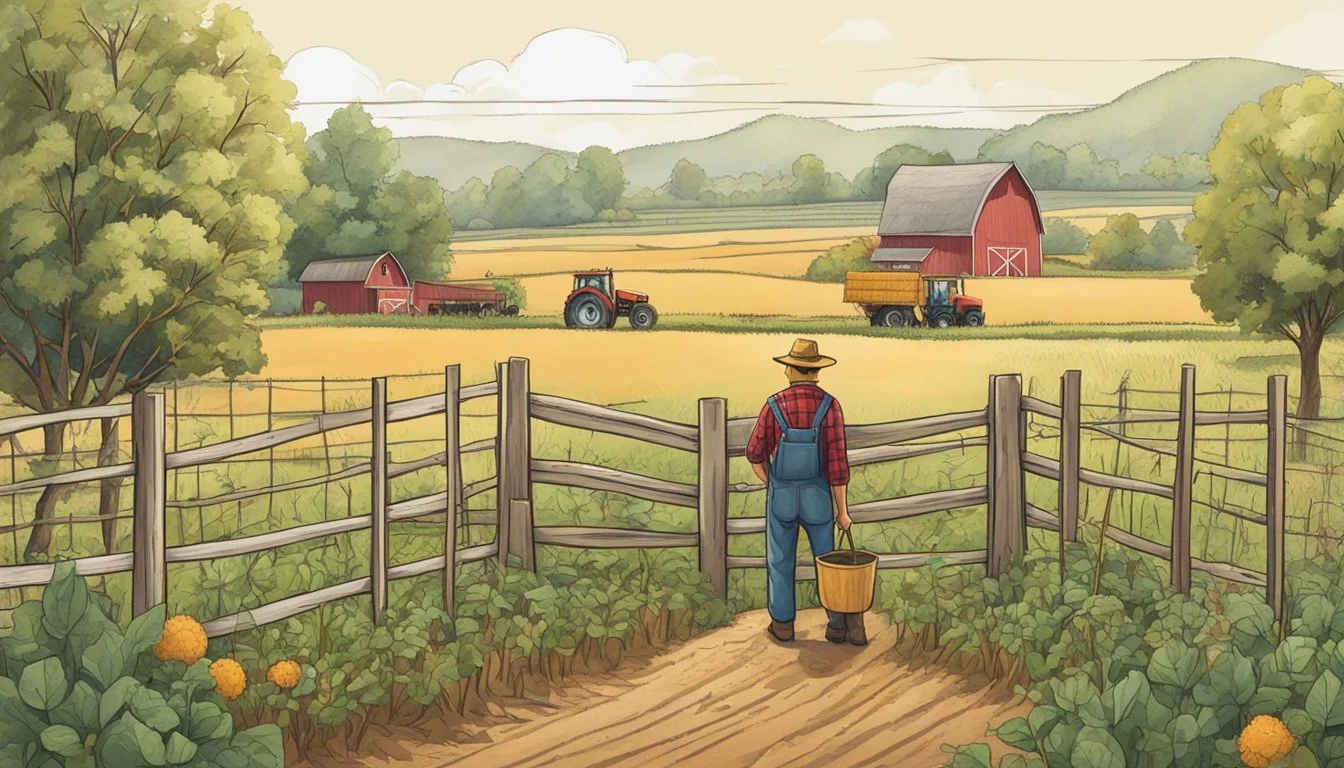Protecting Crops from Red Fox
Effective Deterrence Strategies
Protecting crops from wildlife, particularly the red fox, is a significant challenge for farmers and conservationists. The red fox is known for its cunning and adaptability, traits that have made it one of the most geographically widespread canids in the world. While these characteristics have enabled the red fox to thrive in varying environments, they also pose problems for agriculture. In agricultural landscapes, red foxes may prey on small livestock and damage crops, which can have economic repercussions for farmers. Effective management strategies are essential to mitigate the impact of red foxes on agriculture while considering the species' ecological significance and conservation status.
Traditional methods of wildlife management often involve lethal control, but this can be controversial and may not always align with conservation efforts. Non-lethal alternatives are gaining traction as they offer a less contentious approach to reduce human-wildlife conflict. Innovative techniques such as protecting farms and reducing human-wildlife conflict with simple deterrent devices have shown promise. Understanding the behaviors and ecology of the red fox is crucial in designing management practices that safeguard crops without adversely affecting local wildlife populations.
Conservation efforts aim to protect not only crops but also the red fox species and the ecosystems they inhabit. As with all wildlife, it is important to manage red fox populations in a way that is humane and maintains ecological balance. Given the red fox's conservation status, it is vital to approach crop protection with an inclusive perspective that supports the needs of farmers while contributing to the ongoing efforts to preserve biodiversity. Through a combination of research, technology, and collaboration, it is possible to create solutions that address agricultural concerns and support the conservation of this adaptable and resilient species.
The Red Fox: Species Overview
The red fox is renowned for its adaptability and presence across various habitats. This section provides an essential understanding of the species, including its classification, characteristics, and life patterns.
Taxonomy and Subspecies
The scientific name for the red fox is Vulpes vulpes. It is a member of the Carnivora order, specifically within the Canidae family. There are multiple subspecies present in North America, including the native Vulpes vulpes fulva and the Sierra Nevada red fox (Vulpes vulpes necator), among others. The latter is adapted to high-elevation habitats in the Sierra Nevada and Cascade Range. European red foxes, though part of the same species, have been introduced to various regions where they are considered non-native.
Physical Characteristics and Adaptations
Red foxes display a variety of coat colors, ranging from their iconic reddish fur to black, grayish, and even the winter white. These canids stand out for their thick fur and bushy tails. Adaptations such as fuzzy toe pads and a winter coat enable them to thrive in snowy environments. The Sierra Nevada red fox, for example, is smaller with a denser fur coat to combat the cold of higher elevations.
Habitat and Geographic Distribution
The red fox is distributed widely across the Northern Hemisphere, demonstrating remarkable versatility in its habitat preferences. It can be found in diverse locations from the boreal forests of Alaska and Canada down through the lower contiguous United States, including states like California and Oregon. Their habitats range from the harsh alpine conditions of the Sierra Nevada to the more temperate environments elsewhere.
Diet and Prey
As opportunistic feeders, red foxes have a diet that primarily consists of rodents, rabbits, and other small prey. They play a pivotal role as predators, helping to maintain the balance of ecosystems by controlling prey populations. Their hunting habits reflect their adaptability; they are known to change their dietary patterns with shifts in prey availability and seasonal variations.
Behavior and Life Cycle
Red foxes are generally solitary and exhibit nocturnal or crepuscular activity patterns. Their lifecycle involves a breeding season typically early in the year, followed by a period of rearing young in dens. These canids are also known for their cunning nature and agile movement, which aid in their survival and proficiency as hunters across varied terrains.
Environmental Challenges and Conservation
Red foxes face an array of environmental challenges that necessitate concerted conservation efforts. Strategies to mitigate these challenges include understanding their conservation status, addressing threats, adapting to environmental changes, implementing targeted conservation efforts, and continuous research and monitoring.
Conservation Status
The Sierra Nevada red fox, a subspecies of the red fox, has been recognized as an endangered species due to a significant decline in its population. The U.S. Fish and Wildlife Service has highlighted the urgency to protect this species amidst mounting environmental pressures.
Threats to Red Fox Populations
Multiple threats contribute to the red fox’s precarious position, including habitat loss and fragmentation from human activity and urban expansion. Invasive species, such as the presence of non-native red fox subspecies, pose genetic and competitive threats. Predation by larger predators, such as coyotes, further exacerbates the decline. Additionally, climate change impacts, manifesting as changes in temperature and snow patterns, affect red fox populations by altering their habitats and prey availability.
Adaptive Responses to Environmental Change
Red foxes exhibit various adaptive responses to environmental changes. They adjust breeding patterns, forage in new habitats, and sometimes alter their diet to manage the effects of climate change and habitat fragmentation. Despite these efforts, ongoing pressures continue to challenge their survival.
Conservation Efforts and Strategies
Conservation efforts and strategies involve habitat protection, management strategies to curb human interference, and the implementation of corridors to connect fragmented habitats. Organizations strive to create actionable plans that steward red fox populations back to stability. These plans often involve partnerships with institutions such as the University of California, Davis and the Forest Service.
Wildlife Cameras: Systematic use in surveys to monitor populations in various habitats.
Data Analysis: Detailed evaluation of the collected data to inform management strategies.
Legislation: Protection under the Endangered Species Act, bolstering legal safeguards against threats.
Research and Monitoring
Vital to the red fox’s future is research and monitoring conducted by various universities, including Oregon State University and non-profits that help in understanding the complexities of red fox ecology. This research comprises tracking movement patterns using wildlife cameras and analysis of the environmental factors influencing their populations. The findings guide the DOI and other agencies in crafting nuanced conservation strategies. Continuous monitoring allows for timely adjustments to management strategies, ensuring that conservation efforts remain effective in the face of changing environmental conditions.
Human-Wildlife Interactions
Red foxes adapt to diverse environments, often bringing them close to human activities. Human-wildlife conflict arises when they target livestock and poultry, leading farmers to seek effective management strategies.
Impact on Agriculture
Foxes are predators that can significantly impact agricultural practices, particularly when they prey on poultry and livestock. Issues frequently arise for farmers, as foxes are known to hunt chickens, ducks, and even young lambs. This predation can lead to economic losses and the urgent need for strategies that protect agricultural interests while considering the ecological role of the fox.
Primary concerns for farmers:
Loss of poultry
Predation of lambs and other small livestock
Spread of diseases to humans and animals
Population Control and Management
Population control measures are critical in areas where red fox numbers conflict with agricultural practices. Trapping, hunting, and in some cases, the use of poison baits are conventional methods to reduce fox numbers. These lethal approaches often raise ethical and ecological questions, pressing for a balance between control and conservation. Vaccination has been explored as a non-lethal alternative to manage diseases such as rabies.
Management strategies include:
Lethal methods: hunting and trapping
Non-lethal methods: vaccination and relocation
Habitat modification to discourage fox presence
Coexistence and Conflict Mitigation
Finding common ground, where humans and wildlife can coexist, requires innovation and adaptation on the part of the farmers. Fencing is a highly effective management strategy to protect livestock without harming wildlife. Additionally, employing guard animals, using noise to deter foxes, and modifying farming practices can all contribute to reducing human-wildlife conflict. These conflict mitigation efforts strive to balance agricultural needs with the conservation of wildlife.
Coexistence strategies:
Installation of predator-proof fencing
Use of livestock guardian animals
Adaptation to farming practices that deter fox presence
Understanding Red Fox Behavior
The red fox is a complex animal, adapting to environments alongside apex predators and within human-influenced landscapes. Recognizing its interactions with other species and responses to human activity is essential for effective crop protection.
Interactions with Other Species
The red fox plays a significant role in the ecosystem as a mesopredator. It interacts with various wildlife, including coyotes, which often dominate them in the competition for resources. Foxes may also share habitats with other nativorous species like the badger and the gray fox, leading to intricate ecological dynamics. Studies suggest that their behavioral patterns around resource points shift when in proximity to these predators.
Responses to Human Activity
Human activity such as development and associated noises, including the use of snowmobiles, impacts red fox behavior. They display a range of responses, from nocturnal tendencies to minimize contact, to utilizing human structures for shelter. The presence of humans and their activities compel red foxes to alter their natural patterns, demonstrating their adaptability to changing conditions. Understanding these behaviors is crucial in crafting strategies to protect crops from these agile animals.
Protective Measures for Crops and Livestock
Effective protection of crops and livestock from red fox predation hinges on employing a range of deterrent measures and behavioral strategies. Farmers can significantly mitigate losses and manage human-wildlife conflict by adopting non-lethal deterrents, enhancing physical barriers like fencing, and adjusting their practices.
Non-Lethal Deterrents and Fencing
Noise Deterrents:
Devices that create irregular noise patterns can disorient and repel red foxes. These can include recorded human noises or predator alarms.
Visual Deterrents:
Flashing lights, especially those that mimic human activity, can discourage red foxes from entering a property. Devices like Foxlights have found success.
Fencing:
Electric Fencing: A high, electric fence can serve as a physical barrier to protect chickens, lambs, and other livestock.
Fladry: A line of flags or streamers known as fladry can frighten foxes away from farm boundaries.
Behavioral Adaptations of Farmers and Hunters
Livestock Management:
They adjust the timing and location of grazing, keeping vulnerable animals like lambs closer to the farmstead, especially at night.
Hunting Patterns:
Hunters adapt to red fox behaviors, using their knowledge to predict and interrupt potential predation routes.
Cooperative Efforts:
By working collaboratively, farmers can implement widespread measures for red fox control, creating a community-based approach to mitigate the human-wildlife conflict.
Ecological Significance of the Red Fox
The red fox plays a pivotal role in maintaining balance within ecosystems by controlling rodent populations and contributing to genetic diversity among wildlife.
Role in the Ecosystem
The red fox, holding the status of a mesopredator, is an integral part of the ecosystem. They are carnivorous creatures that primarily feed on rodents, thus helping to regulate these populations and prevent overgrazing of vegetation. This predation is vital for the health of various ecosystems, as it aids in sustaining the balance between prey species and their habitats.
Furthermore, as opportunistic feeders, red foxes may also consume a variety of other prey items including insects and small mammals, exerting a broad ecological impact. In areas where they are non-native, red foxes can also have significant effects on the local ecosystem which sometimes requires careful management to ensure native species and habitats are protected.
Biodiversity and Genetic Health
Red foxes hold a significant place in ensuring biodiversity and contribute to a robust genetic pool within their species. Through a biological process known as hybridization, red foxes can breed with closely related species, which can enhance genetic diversity and reduce the risks associated with inbreeding.
Their widespread presence across various terrains and climates has resulted in a multitude of adaptations, showcasing the species' genetic resilience. Conservationists monitor and inform conservation strategies based on understanding the behavioral patterns and genetic health of these animals. Such efforts may include habitat restoration to preserve red fox populations and, by extension, the health of the ecosystems in which they reside.
Frequently Asked Questions
In addressing the concerns about red foxes on agricultural land, it's important to consider several effective management practices. These FAQs focus on proven methods and legal guidelines for protecting crops from these cunning animals.
What methods are effective in deterring red foxes from crop areas?
Guard animals like dogs, llamas, and donkeys, which naturally ward off predators, can be effective. Sensory deterrents such as motion-activated lights or noise makers also serve to disrupt the foxes' sense of security around crop areas.
Can fencing be used to prevent red fox invasion in agricultural fields?
Yes, fencing can be utilized to mitigate the intrusion of red foxes into fields. The installation should be secure, at least 6 feet tall with an additional outward-angled section at the top, and buried into the ground to prevent digging.
What are the legal ways to control red fox populations near farmlands?
It's crucial to follow state and local laws which may permit certain control methods like trapping or hunting. Authorities can provide guidelines on humane and approved practices while ensuring the protection of non-target species.
How does the diet of red foxes impact crop protection strategies?
Red foxes primarily feed on small mammals and occasionally on fruits and vegetables. Understanding their dietary preferences helps in devising strategies like removing potential food sources, thereby making croplands less attractive to them.
Are there any non-lethal solutions for managing red foxes in farming regions?
Non-lethal methods include the use of repellents, habitat management to reduce denning sites, and exclusion techniques such as installing proper netting over crops that foxes may find appealing.
What role does habitat modification play in reducing crop damage by red foxes?
Modifying the habitats around crop areas to make them less hospitable for red foxes—like clearing brushy areas and managing rodent populations—can significantly decrease the likelihood of foxes causing any damage to crops.

